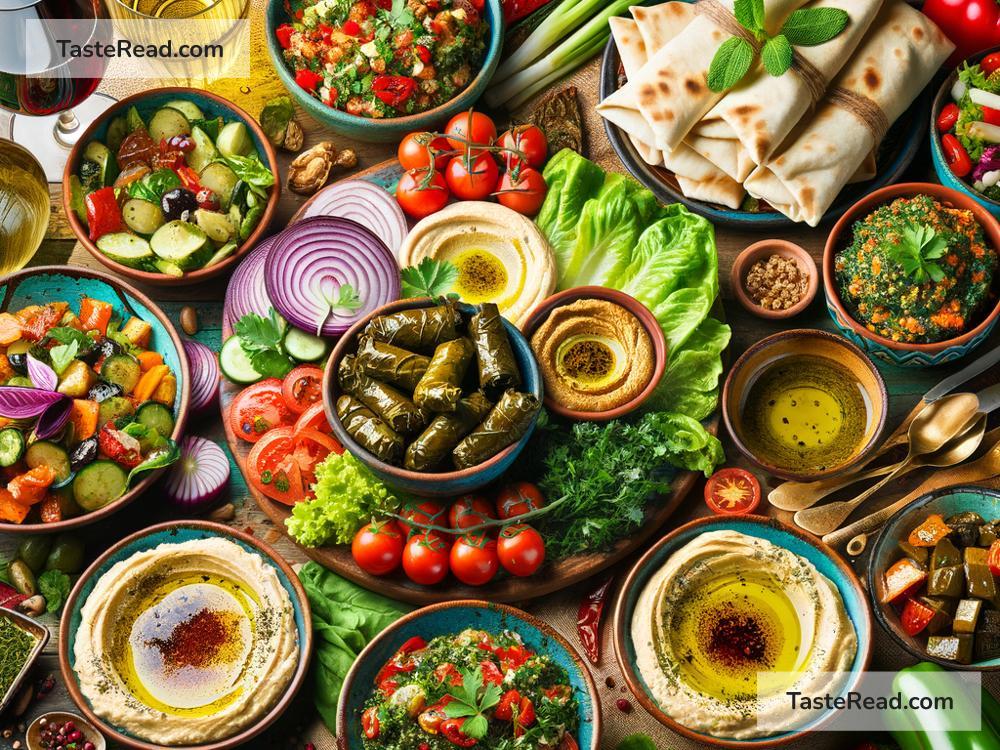How to Prepare a Mediterranean Feast
The Mediterranean region is known for its colorful, flavorful, and healthy food. It’s a cuisine filled with fresh vegetables, olive oil, grains, herbs, and sometimes fish or meat. Preparing a Mediterranean feast is not just about cooking—it’s about bringing joy to the table and sharing delicious food with family and friends. In this blog, we’ll walk you through a step-by-step guide to creating a Mediterranean feast that is simple, fun, and satisfying!
Step 1: Understand the Basics of Mediterranean Cooking
Mediterranean cuisine is all about fresh, simple ingredients. Common flavors include olive oil, garlic, lemon, oregano, and parsley. Many dishes use vegetables like tomatoes, cucumbers, zucchini, and eggplant. Grains like rice, couscous, and pita bread are staples, while legumes like lentils and chickpeas feature prominently. Don’t forget olives and feta cheese—they’re key players in this cuisine.
If you eat meat or fish, options like grilled chicken, lamb, or seafood fit perfectly into a Mediterranean menu. But it’s also easy to create vegetarian or even vegan dishes that highlight the natural flavors of these ingredients.
Step 2: Plan Your Feast
A Mediterranean feast typically includes appetizers, a main dish, sides, and dessert. You don’t need dozens of dishes—just pick a few crowd-pleasers to ensure variety without making it overwhelming. Here’s a suggested menu to get started:
Appetizers (Mezze):
– Hummus and pita bread
– Tzatziki (yogurt-cucumber dip)
– Stuffed grape leaves (dolmas)
– Mixed olives
Main Dish:
– Grilled chicken or lamb kebabs
– Vegetarian moussaka (eggplant casserole)
Side Dishes:
– Greek salad with cucumbers, tomatoes, feta, olives, and oregano
– Couscous with roasted veggies
– Warm garlic flatbread
Dessert:
– Baklava (sweet pastry with nuts and honey)
– Fresh fruit like figs or oranges
Feel free to mix and match these dishes—or add your own twist based on what you enjoy.
Step 3: Shop for Fresh Ingredients
A Mediterranean feast starts at the grocery store or farmer’s market. Buy fresh ingredients whenever you can. For vegetables, look for vibrant colors—ripe red tomatoes, bright green cucumbers, and shiny eggplant. Fruits like lemons, oranges, and figs will enhance your desserts and salads.
Pick up pantry staples like olive oil, garlic, dried oregano, and chickpeas. Don’t forget some pita bread, feta cheese, and olives for your mezze platter. If you plan to prepare kebabs, make sure to buy good-quality meat or fish.
Step 4: Prepare the Mezze (Appetizers)
Mediterranean meals often start with mezze, which are small dishes that guests can snack on while chatting. Here’s how to make a few popular options:
-
Hummus: Blend chickpeas, garlic, lemon juice, tahini (sesame paste), and olive oil in a food processor. Add salt to taste and serve with pita bread.
-
Tzatziki: Mix plain Greek yogurt with grated cucumber, garlic, lemon juice, olive oil, and fresh dill. It’s creamy, cool, and perfect for dipping.
-
Stuffed Grape Leaves: Buy pre-made dolmas at the store to save time, or make them by wrapping cooked rice mixed with herbs and spices in grape leaves.
Arrange the mezze on a large platter with olives on the side. It should feel warm and welcoming!
Step 5: Cook Your Main Dish
Your main dish will be the star of your feast. For grilled kebabs:
1. Cut chicken, lamb, or seafood into bite-sized pieces.
2. Marinate in olive oil, lemon juice, garlic, and spices (like paprika or cumin).
3. Thread the meat onto skewers with chunks of bell peppers, onions, or zucchini.
4. Grill until cooked through and lightly charred.
If you’re making vegetarian moussaka:
1. Slice eggplant and sauté until softened.
2. Layer with tomato sauce, cooked lentils, and a creamy béchamel (milk-based sauce).
3. Bake in the oven until bubbly and golden.
Both dishes are hearty, filling, and packed with flavor.
Step 6: Prepare Side Dishes
Mediterranean side dishes are simple to make. Toss together a classic Greek salad in minutes:
1. Combine diced cucumbers, tomatoes, red onions, olives, and chunks of feta cheese.
2. Drizzle with olive oil and sprinkle with dried oregano.
For couscous, cook according to package instructions, then stir in roasted vegetables like zucchini, carrots, and bell peppers. Season with salt, pepper, lemon juice, and parsley.
Warm garlic flatbread can be store-bought or homemade—just brush it with olive oil and garlic before serving.
Step 7: Add a Sweet Finish
Desserts in Mediterranean cuisine are rich and satisfying. Serve pre-made baklava or try your hand at making it with layers of phyllo dough, chopped nuts, and honey syrup.
If you want something simpler, offer fresh fruit like orange slices, figs, or grapes. They pair wonderfully with the flavors of the meal.
Step 8: Set the Table and Serve
Presentation is important in Mediterranean dining. Use colorful serving dishes or platters and garnish the food with fresh herbs or lemon wedges. Fill glasses with cool water, or consider serving light wine or sparkling water to complement the meal.
Step 9: Enjoy!
A Mediterranean feast is meant to be enjoyed slowly, with good conversation and laughter. Take time to savor the dishes you’ve made, and let your guests do the same. The beauty of this cuisine lies in its simplicity, but also in its ability to bring people together.
So the next time you want to transport yourself to the sunny shores of Greece, Italy, or Turkey, try preparing a Mediterranean feast. With a little planning and fresh ingredients, you’ll be serving up a meal full of love and flavor. Bon appétit—or as they say in Greece, “Kali Orexi!” (Good appetite!)


